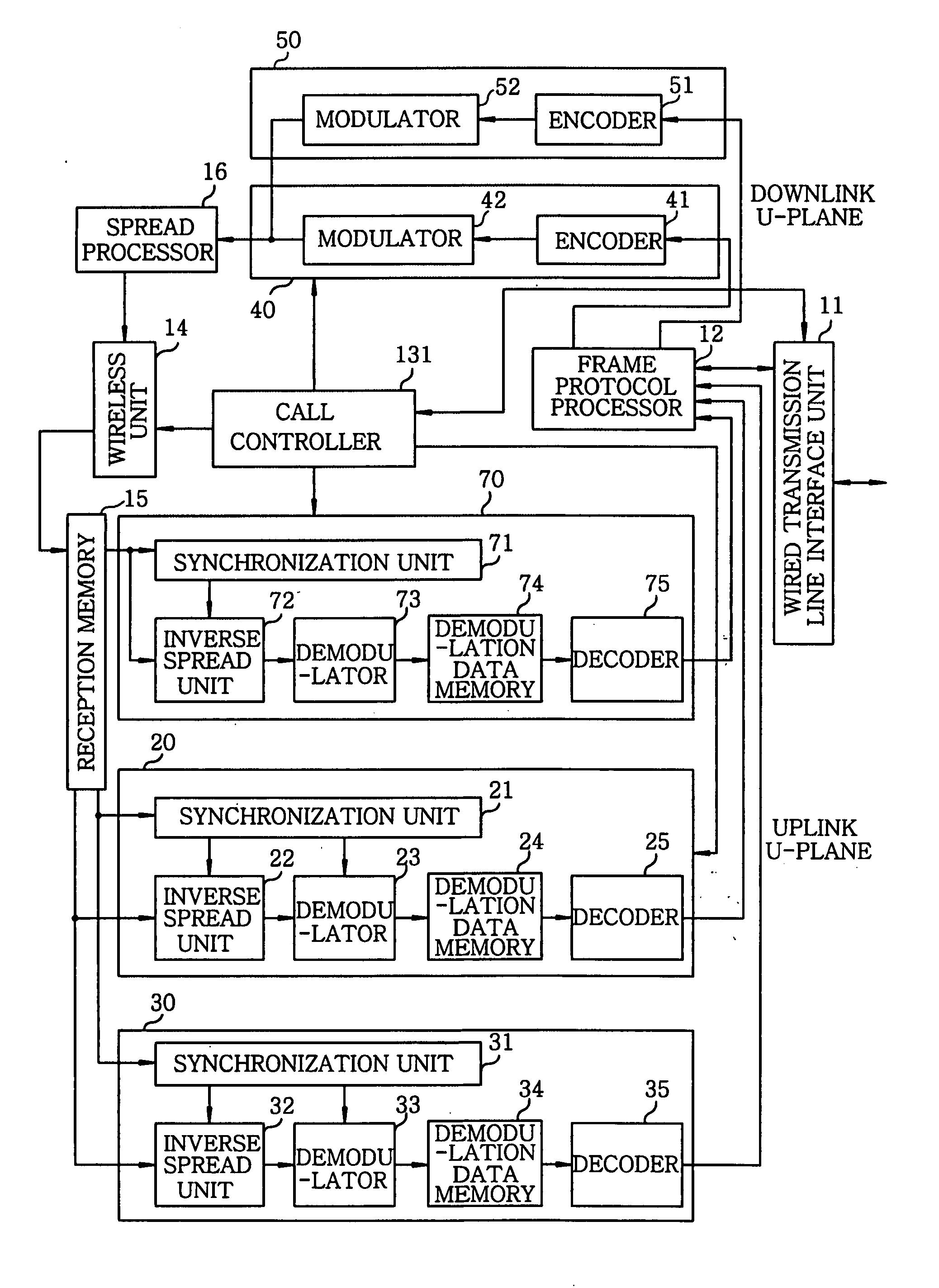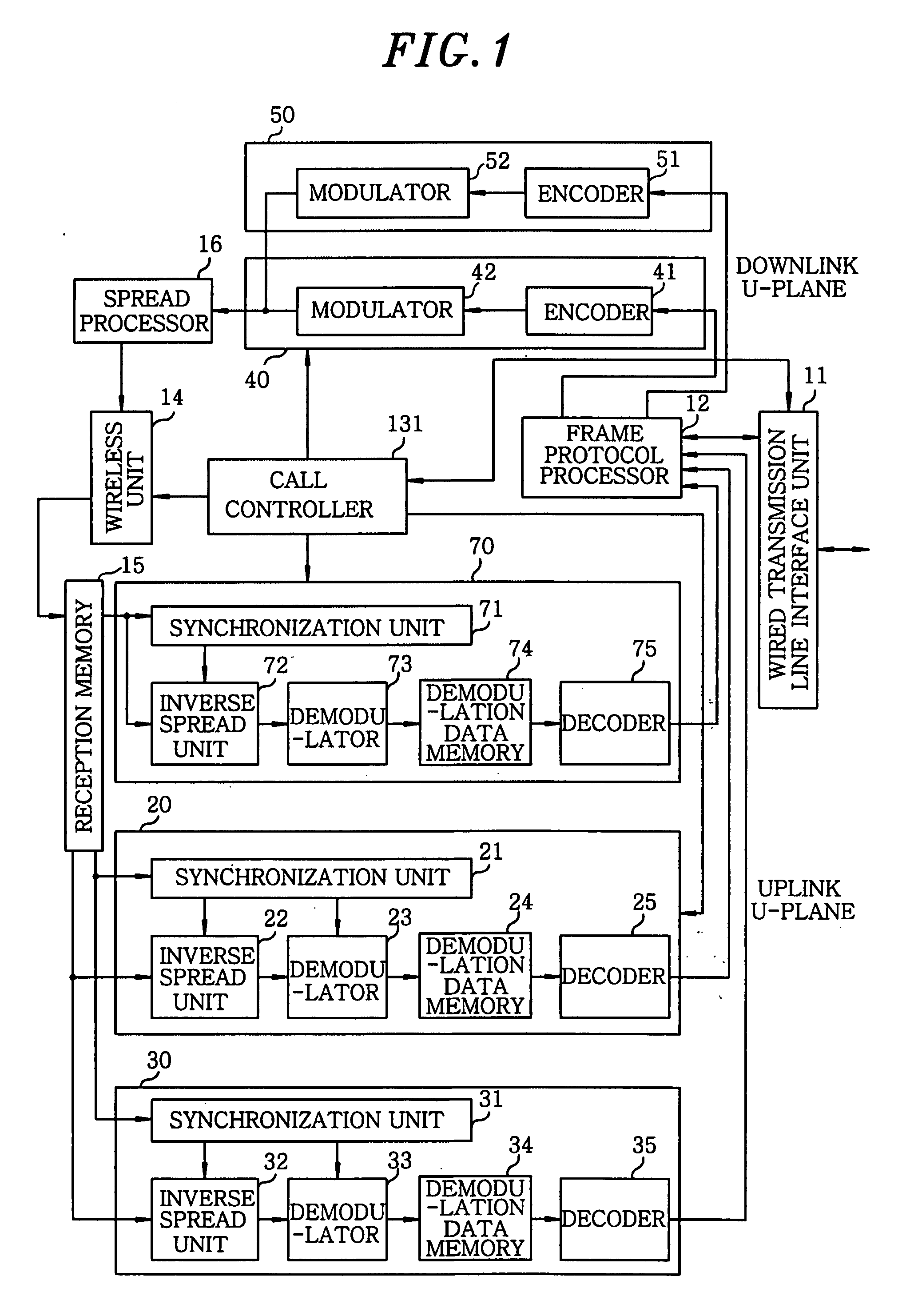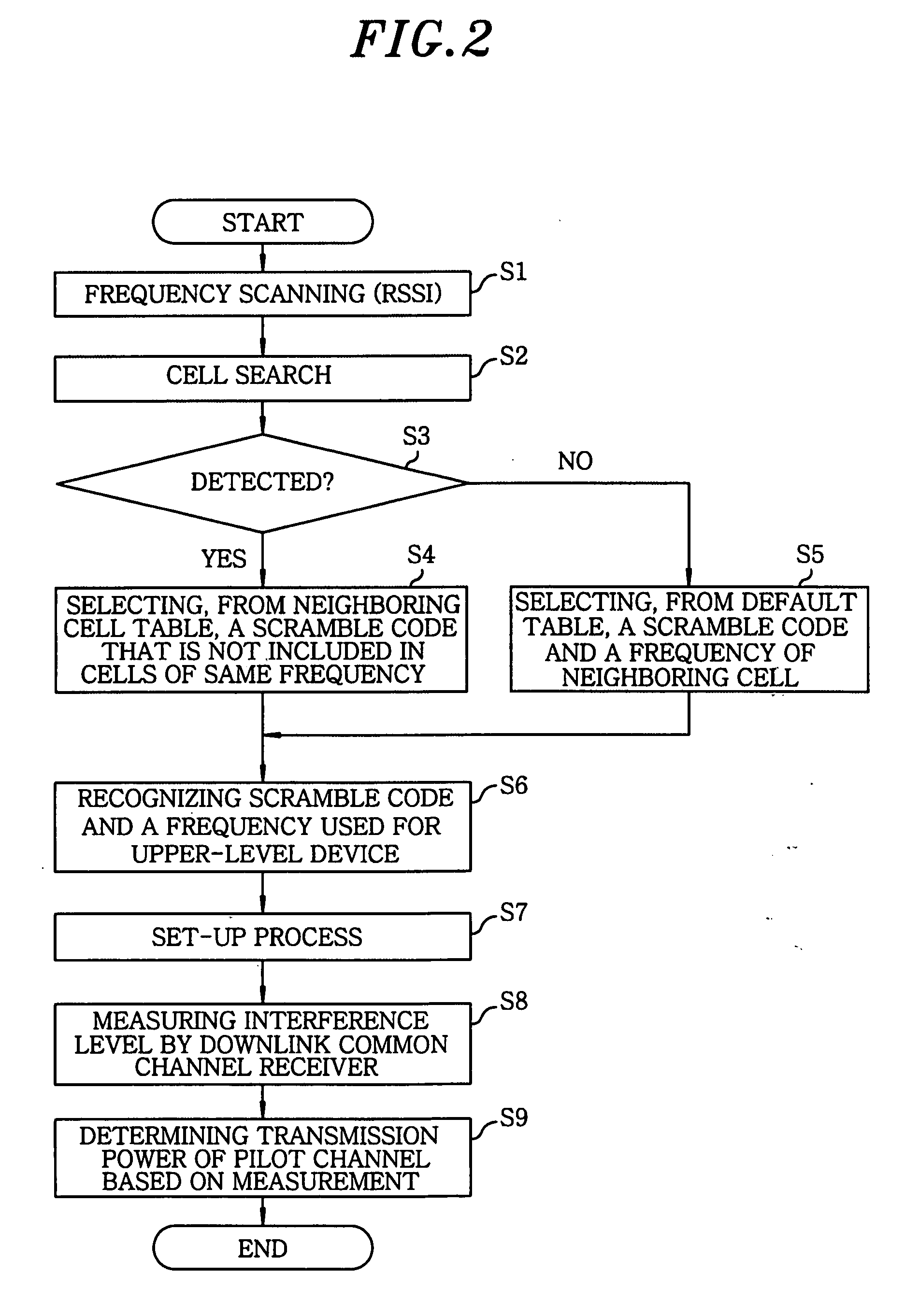Wireless base station device
a base station and wireless technology, applied in power management, data switching networks, instruments, etc., can solve the problems of difficult to prepare suitable parameters in advance, inability to perform proper operations, and easy damage to cells
- Summary
- Abstract
- Description
- Claims
- Application Information
AI Technical Summary
Benefits of technology
Problems solved by technology
Method used
Image
Examples
first embodiment
[0081]Hereinafter, a first embodiment of the present invention will be described in more detail with reference to the accompanying drawings. Hereinafter, same reference numerals are denoted for same parts as in the conventional device shown in FIG. 4.
[0082]FIG. 1 shows a block diagram illustrating an exemplary configuration of a baseband unit of a wireless base station device in accordance with a first embodiment of the present invention. The wireless base station device includes a wired transmission line interface (IF) unit 11 connected to an upper-level device (RNC); a frame protocol (FP) processor 12 for performing a frame protocol processing required for interfacing with the wired transmission line; a call controller 131 for performing a call control; a wireless unit 14 for communicating with a mobile station; a reception memory 15 for storing sampling data of uplink reception data outputted from the wireless unit 14; a baseband receiver 20 of an individual uplink channel for pe...
second embodiment
[0129]Hereinafter, a second embodiment of the present invention will be described in detail with reference to the accompanying drawings.
[0130]FIG. 6 is a diagram illustrating an exemplary configuration of a wireless communications system in accordance with a second embodiment of the present invention.
[0131]The wireless communications system of the second embodiment includes a terminal device 611, a base station device (radio base station device) 601, a router 602, a modem 603, a network 604 comprised of a telephone line, an optical fiber and the like, a circuit-terminal equipment 605, a server 606, a gateway 607, and a base station controller (radio base station controller) 608.
[0132]Here, this embodiment illustrates a case of using PPPoE, wherein the base station device 601 is equipped with a PPPoE client function and the server 606 is equipped with a PPPoE server function. Further, the router 602 has a PPPoE pass-through function, and the base station device 601 and the router 602...
PUM
 Login to View More
Login to View More Abstract
Description
Claims
Application Information
 Login to View More
Login to View More - R&D
- Intellectual Property
- Life Sciences
- Materials
- Tech Scout
- Unparalleled Data Quality
- Higher Quality Content
- 60% Fewer Hallucinations
Browse by: Latest US Patents, China's latest patents, Technical Efficacy Thesaurus, Application Domain, Technology Topic, Popular Technical Reports.
© 2025 PatSnap. All rights reserved.Legal|Privacy policy|Modern Slavery Act Transparency Statement|Sitemap|About US| Contact US: help@patsnap.com



